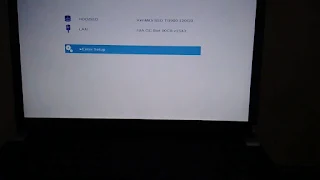Installing Ubuntu Unity Linux OS, Dual Boot with Windows on PC
Ubuntu Unity is one of official flavours of the most popular Linux OS (distro) for PC, the Ubuntu Desktop. What makes it stands out? It's the desktop user interface called Unity desktop.
Nerdizen.xyz — When I tried it on my Toshiba Dynabook R734/K laptop, I really love the Unity desktop.
Unity Desktop is actually the older version of Gnome desktop (if I'm recall it correctly), the one was official Ubuntu desktop. But as newer releases of Ubuntu came, the desktop slowly changed to the way it is now.
So, the community tried to maintain and also modernize the best of Unity desktop and rolled it on a Linux distro called Ubuntu Unity.
Steps dual booting Ubuntu Unity and Windows on PC
Requirements:
- Backup!
- Bootable media creation tool, for exampe Ventoy or Rufus.
My environments:
- Ubuntu Unity version: 22.04.1
- Device: Toshiba Dynabook R735/K
- Installed OS: Windows 8.1
Steps:
- Download the Ubuntu Unity OS iso on the official website and make it a bootable media, for example here I am using Ventoy.
- Prepare two new partitions on our PC's hard drive. For example we can use the Windows' Disk Management (Shrink volume…):
a: A ≥ 32 GB partition to host the Ubuntu Unity OS files.
b: (Optional) A partition with same or twice size of our PC's RAM for the swap area. It is to help our PC in multitasking, recommended especially if we have small RAM. - Disconnect any external storages. This is to prevent formatting/erasing wrong storage or partition when installing the Ubuntu Unity OS later.
- Boot our PC into the Ubuntu Unity bootable media we had created. In short, boot our PC into the BIOS settings, then select to boot from the bootable media. For example on Dynabook R734/K you can follow it below (click to expand):
Booting to a bootable media on Toshiba Dynabook R734/K laptop
- Access the
Boot Menu(BIOS menu) on Dynabook R734/K by restarting the laptop and repeatedly pressing F12 until the boot menu/BIOS menu appears. - If the Ubuntu Unity installation/bootable media (e.g., USB storage stick) is not plugged in, do so now to make it appears in the BIOS boot Menu.
- In the Boot Menu, select the installation/bootable media (e.g. USB drive) to boot into it directly. Alternatively, adjust the boot order to prioritize the installation/bootable media for automatic booting. Follow these steps:
- Choose
Enter Setupfrom the Boot Menu main menu.
- In the side menu, select
Advanced, scroll down, and chooseChange Boot Order.
- Set the USB drive (or your relevant storage) where the Ubuntu Unity bootable media is located to the top of the Boot Priority Options and click
OK.
- Select
Exit→Exit Saving Changesfrom the side menu.
- Choose
- In the Ventoy boot main menu, consider switching to GRUB2 Mode for increased compatibility in booting Linux images by pressing Ctrl+R. Then, browse and select the Ubuntu Unity iso and press Enter to initiate the Ubuntu Unity OS live media boot process.
- Now we're booting to the Ubuntu Unity black GRUB boot menu, select the "Ubuntu Unity" to boot to the live CD.
- After booting to the desktop, we can look around first without installing anything. After we're ready, double click the "Install Ubuntu Unity" shortcut on the desktop.
- Now the installation wizard window will appear. First, select language and keyboard layout, click "Continue" at the bottom to proceed.

- Wireless window. If we connect to a network we can installing the Ubuntu Unity while updating it simultaneously later. Here I am choosing "I don't want to connect…", I want to update later after it had been installed.

- Updates and other software window. We can choose between "Normal installation" with full fledged apps like Office, or "Minimal installation". On the bottom, recommended to check "Install third-party software for graphic…". Click "Continue" at the bottom to proceed.

- Installation type window. Because we've prepared the partitions beforehand, choose "Something else".

- Next we will set the partition. First select the partition where Ubuntu Unity OS files will be installed to, right click on it → "Change…". On the "Use as" selection, select "Ext4 journaling file system". On the "Mount point" selection, choose "/". Tick the "Format the partition", → Click "OK".

- (Optional) Still on the partition settings window. Next, choose a partition to use as swap area, right click on it → "Change…". On the "Use as" selection, choose "swap area" (tick the "Format the partition" checkbox if it's clickable), → Click "OK".

- On the "Device for boot loader installation" selection, make sure it's selected to our PC's main hard drive (typically it's
/dev/sda). - Click the "Install Now" button on the bottom to begin installing the Ubuntu Unity OS files.
- Select time zone, type our country's capital, it should show suggestions → "Continue".
- "Who are you?" window. Lastly, fill our user's credentials, especially username and password since it will be used to login to our freshly installed Ubuntu Unity OS later.
- After the installation done, restart our PC. The next time we boot our PC, the GRUB bootloader menu should be presented, allowing us to choose to boot between the Ubuntu Unity or existed Windows (or whatever OS installed).
Ubuntu Unity Linux OS quick review
My environment:
- Ubuntu Unity version: 22.04.1
- Device: Toshiba Dynabook R734/K
There are some features differentiate the Unity desktop to the currently Gnome desktop, noticeably the HUD interface.
The Unity HUD is an easy way to reach everything we need or search in one simple, fast user interface.
But what I really love the most from Unity desktop is the title bar merge with windows and menu buttons on the system panel.
When we maximed an app, instead creating a title bar with window buttons, the title bar and window buttons will be merged into the system panel.
So on a maximized app, the system bar will show the window's title on the left by default. But when we're hovering the mouse on it, the window's buttons and menu bar will showing.
I really love the feature, it's so nice to save spaces on smaller screen like my Dynabook R734/K laptop.













